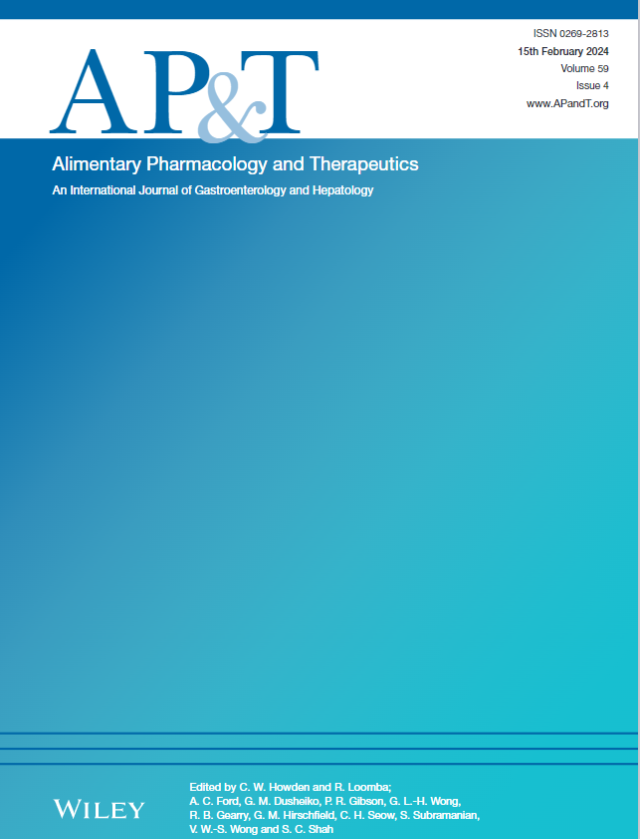Emerging Trends in Patients Hospitalised With Cirrhosis—Aetiologies, Complications and Outcomes Compared to Other Chronic Health Conditions
IF 6.7
1区 医学
Q1 GASTROENTEROLOGY & HEPATOLOGY
引用次数: 0
Abstract
BackgroundThe aetiologies, complications and overall burden of cirrhosis have undergone changes in recent years.AimsThis study aimed to assess the emerging trends in cirrhosis and its complications whilst also comparing them to other major chronic health conditions.MethodsThis retrospective study covering 2011–2022 was conducted at the Charité University Hospital Berlin and University Hospital Leipzig (validation cohort), Germany. ICD‐10 codes were used to identify patients with cirrhosis, its complications and comorbidities. Changes in demographics, aetiologies, complication rates and inpatient mortality were assessed. Trends were compared against major chronic health conditions.Results24,567 (Berlin) and 14,141 (Leipzig) inpatient admissions for cirrhosis were identified. Overall admission numbers have been decreasing; however, in‐hospital mortality and complication rates have been increasing. Alcohol‐related liver disease was persistently the most common cause of cirrhosis (42%). Mortality rates for admissions with variceal haemorrhage and gastrointestinal bleeding have increased from 15.53% and 10.53% in 2011 to 27.69% and 31.25% in 2022, respectively. Cirrhosis admissions had some of the highest rates of inpatient mortality (7.45%), despite being considerably younger and less comorbid than admissions with other chronic health conditions. Over time, the median age of admissions with other chronic diseases increased considerably more than admissions with cirrhosis. In the validation cohort, high inpatient mortality, increasing GI bleeding associated mortality, and complications rates were confirmed.ConclusionCirrhosis remains a significant clinical and public health challenge and is falling behind other major comorbidities with regard to inpatient outcomes. A focus on improved resource allocation and management options is warranted.与其他慢性健康状况相比,肝硬化住院患者的新趋势——病因、并发症和结局
近年来,肝硬化的病因、并发症和总体负担发生了变化。目的本研究旨在评估肝硬化及其并发症的新趋势,同时将其与其他主要慢性健康状况进行比较。方法本回顾性研究于2011-2022年在德国柏林慈善大学医院和莱比锡大学医院(验证队列)进行。ICD‐10代码用于识别肝硬化患者及其并发症和合并症。评估了人口统计学、病因学、并发症发生率和住院病人死亡率的变化。将趋势与主要慢性健康状况进行比较。结果共发现24,567例(柏林)和14,141例(莱比锡)肝硬化住院患者。总体入学人数一直在下降;然而,住院死亡率和并发症发生率一直在上升。酒精相关肝病一直是肝硬化最常见的原因(42%)。静脉曲张出血和胃肠道出血的入院死亡率分别从2011年的15.53%和10.53%上升到2022年的27.69%和31.25%。肝硬化住院患者的住院死亡率最高(7.45%),尽管他们比其他慢性疾病住院患者年轻得多,合并症也少。随着时间的推移,因其他慢性疾病入院的中位年龄明显高于因肝硬化入院的中位年龄。在验证队列中,住院患者死亡率高,胃肠道出血相关死亡率增加,并发症发生率得到证实。肝硬化仍然是一个重大的临床和公共卫生挑战,并且在住院结果方面落后于其他主要合并症。必须把重点放在改进资源分配和管理办法上。
本文章由计算机程序翻译,如有差异,请以英文原文为准。
求助全文
约1分钟内获得全文
求助全文
来源期刊
CiteScore
15.60
自引率
7.90%
发文量
527
审稿时长
3-6 weeks
期刊介绍:
Alimentary Pharmacology & Therapeutics is a global pharmacology journal focused on the impact of drugs on the human gastrointestinal and hepato-biliary systems. It covers a diverse range of topics, often with immediate clinical relevance to its readership.

 求助内容:
求助内容: 应助结果提醒方式:
应助结果提醒方式:


